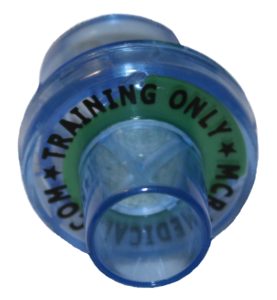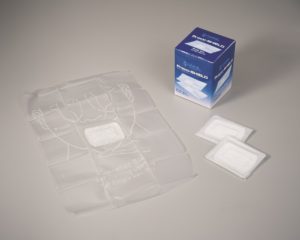CPR training uses a lot of “consumables.” As an instructor, you know you have to replace training valves after each class, but do you know why? Today we’ll explain a little about how valves work, and compare pros and cons of valves vs CPR training shields.
 How it Works:
How it Works:
When students breathe into the valve, it’s like blowing into a balloon: inflating and deflating (lung bags work just like balloons!). Then, they pass the “balloon” to the next person.
Within the valve stem is a gauze-like material that prevents fluids transferring between students during practice, preventing cross-contamination.
One and Done:
Unfortunately, you can’t reuse the valves. Although you can sterilize the CPR training mask, any attempt to sterilize the valves will break down the gauze-like material. In fact, disinfecting them almost guarantees the material will fail and create a potential health hazard.
Other Options:
MCR Medical offers a safe and cost-effective alternative you can use throughout the entire class.
Our CPR training shield uses the same concept as the valve and gauze-like material for protection. But unlike the valve (which goes into the CPR mask and then over the manikin’s mouth when giving breaths), our barrier goes over the manikin’s face when giving breaths.

These disposable shields come in packs of 50, making them about $.24 per student compared to about $1.10 per student for valves. You can use them alone or with a CPR training mask, which may save you money if you’re just starting your CPR training career.
Other Benefits:
The shields provide effective “real situation” training. Most people won’t have a CPR mask on them in an emergency, so why train them to use one? And the barrier is one size fits all, so it can be used on any size manikin.
Altogether, we feel that these CPR training shields are a great alternative to valves and an asset to your training program.
For more info about valves, masks, barriers and making the most of your CPR class budget, contact us. Our CPR professionals are happy to discuss your needs and help you make the right decisions for your classroom. Call or visit mcrmedical.com today!
You can also check out these posts for more helpful tips about barriers, masks, and valves:
Cross-Contamination and One Way Valves
The CPR Rescue Masks and Other Barrier Devices

